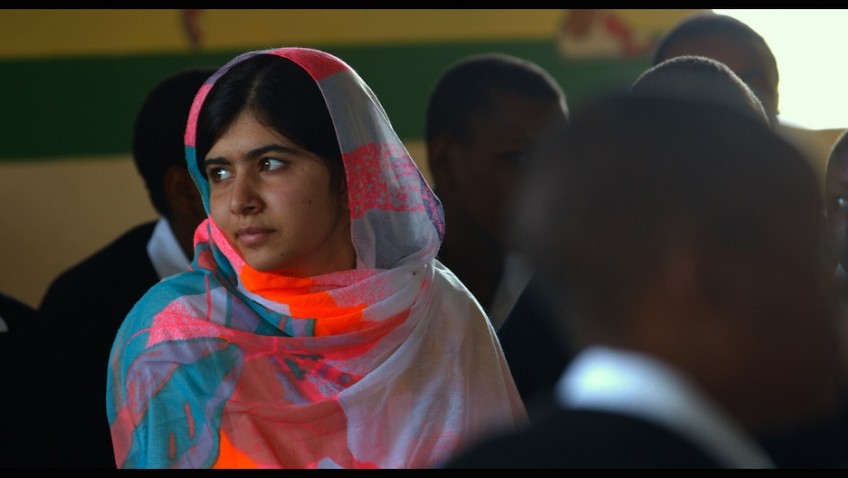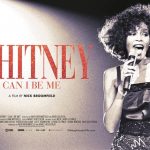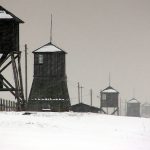Joyce Glasser reviews He Named Me Malala
In He Named Me Malala, Davis Guggenheim’s (An Inconvenient Truth) absorbing, if somewhat superficial, biopic of the world’s youngest Nobel Peace Prize winner, Malala tells us that she was named after an Afghani folk heroine whose belief that ‘it is better to live like a lion for one day than like a slave for ever’ saved her people.
The film is the story of the school-teacher father who gave his daughter this name, and the daughter who proved her worthiness to bear it. It is hard to feel anything but admiration for this brave school girl as we follow her journey from Pakistan’s Swat Valley to Birmingham, UK and to Oslo to collect her Nobel Peace Prize. Still this is a one-sided tribute and Guggenheim seldom probes beneath the surface.
Ironically, the original Malala was a resistance fighter against the very British government that, in October 2012, offered her and her family asylum in the wake of an assassination attempt. By then, Malala was already the most famous teenager in the world and many countries offered to shelter her. Settled in a lovely, roomy house in Birmingham, we see Malala and her two funny and adorable brothers tease one another, and we are exposed to our first shots of the close interaction between Malala and her father, who seldom leaves her side. Malala tells us a little about the challenges of studying for her GCSE’s (she received 10 A*s) while being in the media spotlight and travelling for her campaign for female education.
We then go back to the Swat Valley where terrifying archive footage accompanies her and her father’s tale of her extraordinary life, which began in 1997. Malala’s father Ziauddin learnt public speaking from his father and mixed political speaking with his passion for education, eventually realising his dream of establishing a school where girls could receive a good education. He was teaching when the Taliban imposed a series of bans on female education becoming increasingly hard line.
We listen as Malala and her father describe the terror of being on the Taliban hit list and listening to the Taliban’s nightly broadcasts across the city in which they would name their targets. Despite death threats, bombs, and fires, both father and daughter went on speaking, and, though somewhat played down in the narrative, Malala was becoming more prominent in the media.
Then, on 9 October 2012, when Malala was 15, she boarded a school bus with her classmates, believing this was the safest form of travel. A gunman also entered the bus and threatened to shoot everyone unless Malala identified herself. She was shot in the head and the rest is history.
The story of this fearless girl’s strong principles, her incredible survival against the odds, and her determination to continue fighting and speaking despite the continued dangers, partial loss of hearing and a slight facial disfigurement is the stuff of myth: saints were canonised for less. So Guggenheim’s reverential documentary is somewhat redundant.
Guggenheim does tiptoe around the issue of whether Ziauddin, living what some might consider vicariously through his daughter, bears any responsibility for her fate, knowing the dangers that the 15-year-old faced. Early in the film Guggenheim sets the record state when talking to Ziauddin: ‘You named her after a girl who spoke out and was killed.’ Ziauddin replies, ‘You are right.’ When she was born he amended the all-male family tree to insert the name, ‘Malala’.
For all Ziauddin’s passion for female education (he and Malala speak fluent English) Malala’s mother seldom appears, and when she does, it is primarily in photos to accompany her father Ziauddin’s account of their marriage. Their union is described as one of beauty (his wife’s) and brains (his) and it appears that that Mrs Yousafzai, Tor Pekai, does not speak English well enough to appear in the media, although this is speculation.
At one point Guggenheim returns to Pakistan to canvas the reaction of the Pakistanis to Malala’s accomplishments. Her book, I Am Malala: The Story of the Girl Who Stood Up for Education and was Shot by the Taliban, was, understandably, given her age and the urgency of publication, ghost written by journalist Christina Lamb. But when a man on the street protests that Malala’s father writes her speeches we expect some clarification. Her final speech in the film is full of rousing rhetorical devices and so polished that we wonder how even the most brilliant of 17-year-olds could have written it.
Despite the documentary’s reverential stance, My Name is Malala is an inspirational film that should be required viewing in all UK schools where too many students take education for granted.




